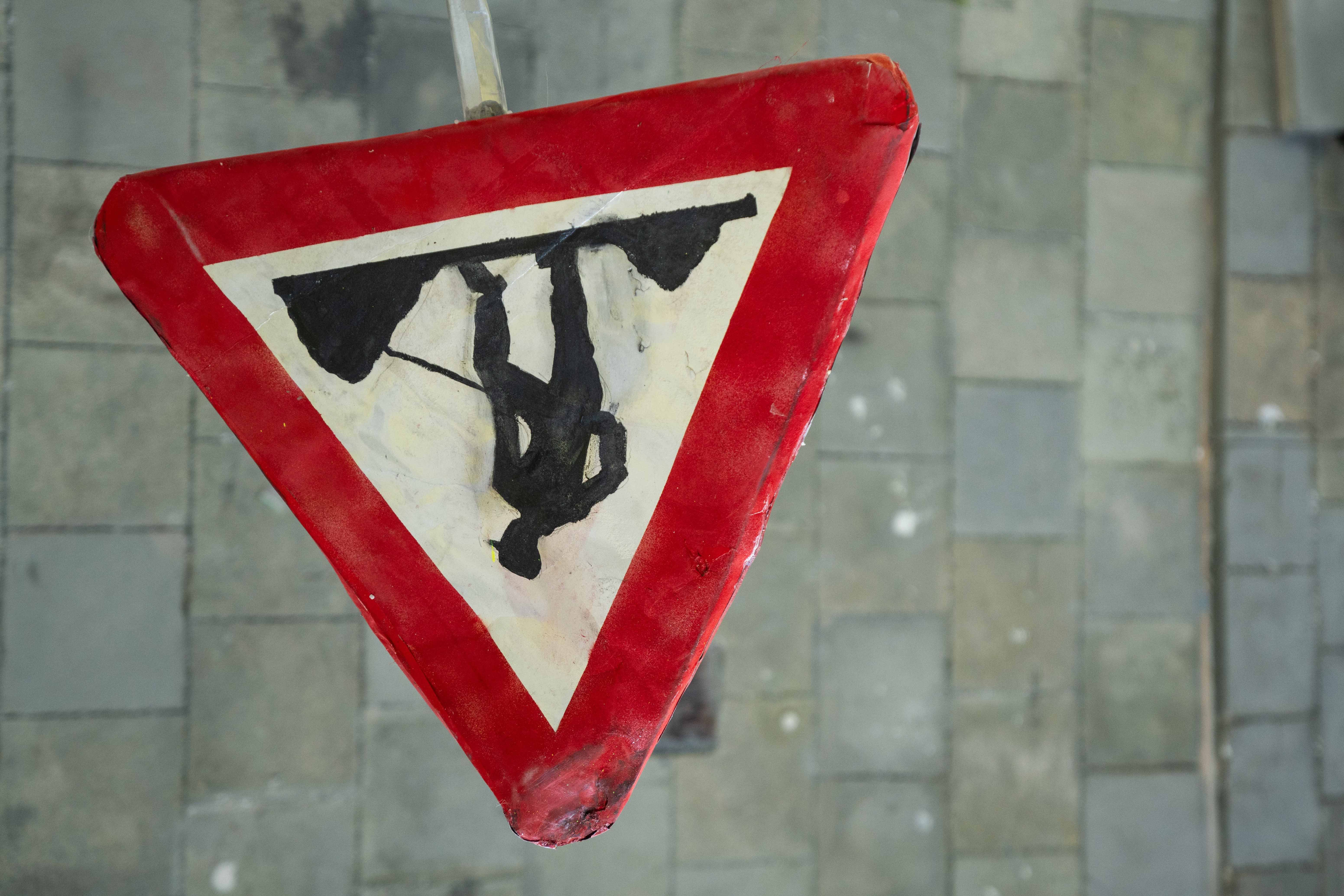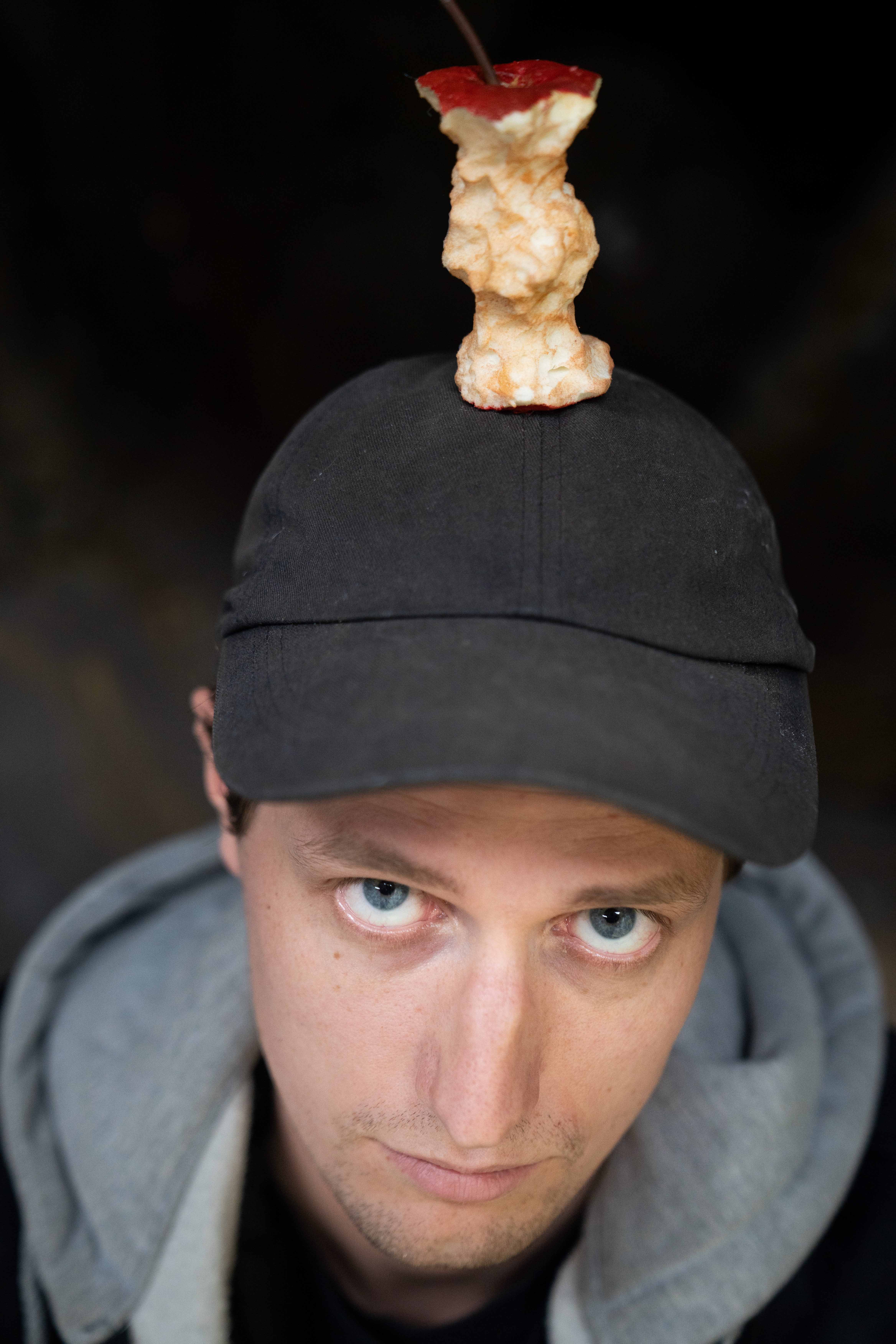For this new work, Ter Braak found inspiration in, among other things, the sometimes surreal Belgian landscape, baroque ceiling paintings, and church architecture. But what is the common denominator between these phenomena and Ter Braak’s working method? Well, they all fool the spectator’s eye using trompe-l’oeil effects. By turning this road segment upside down, depth suddenly becomes height, causing the visitor to look afresh at traces of everyday street life, such as weeds between paving stones, discarded plastic cups, and roadblocks.
Flimsy illusion
After graduating from the painting department of the Royal Academy of Fine Arts in Antwerp, Ter Braak decided to follow his fascination for everyday reality and began recreating the contents of his home using discarded materials. With these found objects he created full-scale mock-ups, mimicking the appearance of his living room, bedroom, and bathroom. But always with a twist: in his installations he plays with familiarity and estrangement, for instance a mirror that shows no reflection, or a stomach-turning perspective. For Way, Ter Braak is using everyday materials as well, like Styrofoam, cardboard, and carpet. While the scene may appear true to life to the visitors inside HALL 6, the people walking on the ramp outside are seeing the rough edges behind the installation. To them it is clear that this is nothing more than a flimsy illusion.
Press

